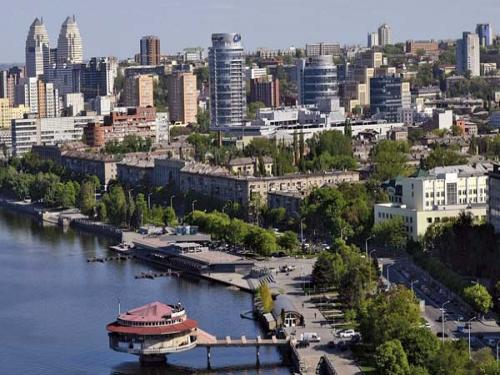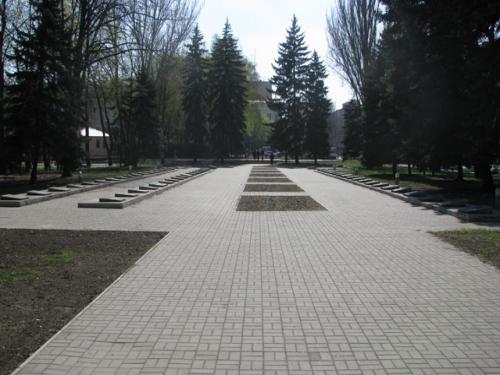Dnipro, Ukraine
General Information about Dnipro, Ukraine
Dnipro , previously called Dnipropetrovsk (from 1926 until May 2016), is Ukraine's fourth-largest city, with about one million inhabitants. It is located in the central-eastern part of Ukraine, 391 kilometres (243 mi)[7] southeast of the Ukrainian capital Kiev on the Dnieper River, after which it is named. Dnipro is the administrative centre of the Dnipropetrovsk Oblast. Administratively, it is incorporated as a city of oblast significance, the centre of Dnipro municipality and extraterritorial administrative centre of Dnipro Raion. It has a population of 998,103 (2019 est.)
Because of its military industry, it functioned as a closed city[nb 1] until the 1990s. On 19 May 2016, Ukraine's Verkhovna Rada changed the official name of the city from Dnipropetrovsk to Dnipro.[12] Dnipro is a powerhouse of Ukraine's business and politics and is the native city of many of the country's most important figures. Much of Ukrainian politics continues to be defined by the legacies of Leonid Kuchma, Pavlo Lazarenko and Yulia Tymoshenko, whose intermingled political careers started in Dnipropetrovsk.
The central streets of the city were renamed in the Soviet times in honor of outstanding revolutionaries and, interestingly, the largest of them is in honor of German figures. Thus, the central street of the city has thename of Karl Marx. It is a very beautiful , wide and long parkway that stretches east to west through the central park of the city. It was founded in the XVIII century and parts of its buildings are actual decorations of the city.
Climate in Dnipro, Ukraine
Under the Köppen–Geiger climate classification system, Dnipro has a humid continental climate. Snowfall is more common in the hills than at the city's lower elevations. The city has four distinct seasons: a cold, snowy winter; a hot summer; and two relatively wet transition periods. The best time for visiting the city is in late spring (late April and May), and early in autumn: September, October, when the city's trees turn yellow. Other times are mainly dry with quite few showers.
Must sees in Dnipro. Salvation - Transfiguration Cathedral in Dnipro.
In the heart of the city is Zhovtneva Square, that includes a majestic Transfiguration Cathedral founded on order of Catherine the Great in 1787. That year the foundation of the Cathedral was built but the construction was paused for quite a long time : at first due to the Russian-Turkish War and secondly due to the ban to build stone constructions on the territory of Ukraine , that was introduce by teh Russian Empire after the death of Catherine the Great. The construction of the Cathedral was renewed only in 1830 with its planned size to become 6 time smaller. The name of the architect was uncertain uptil the years 1950 when architecture historian, Burlakov, prooved that the real author and the architect of Transfiguration Cathedral was Andreyan Zakharov (1761—1811) — one of most renowned Russian architect of teh Classicism epoche. The project of Cathedral construction was developped in 1805—1806. Before the revolution in 1917, Transfiguration Cathedral was considered to be the biggest building in the city. The Cathedral was closed for religious service within the period of 1930 - 1988. Thi building of the Cathedral was used as a depo for "Zorya" print-house In 1975 it was turned into a museum of religion and atheism . Only on the 21st of January 1992 Transfiguration Cathedral was returned back to Ukrainian Orthodox Church and started giving service. In 2008 the main bell of the Cathedral was installed.
Must Sees in Dnipro
In Zhovtneva square , there are some remarkable buildings : the Museum of history, the Diorama “Battle for the Dnipro River (during World War 2)” as well as a beautiful park where one can rest in summer. Walking down the hill to the Dnipro River, one arrives in the large Taras Shevchenko Park (on the right bank of the river) and on Monastyrsky Island. While the compact “old town” does not exist in Dnipro anymore, numerous historic buildings live on. Many historic buildings and churches were destroyed in the Second World War and in Stalin’s Communist times in the 1930th.
However, all of Central Avenue, some street blocks on the main hill (the Nahorna part) between Pushkin Avenue and the Embankment, and sections near the Globy and Shevchenko parts have been untouched for 150 years, retaining their historical character.
Monastyrskiy Island on the Dnipro River
Monastyrskiy island is one of the most interesting places in the city. In the 9th century , Byzantine monks based a monastery here. It was destroyed by Mongol-Tatars in the 13th century.
Holy Trinity Cathedral
It is an orthodox Cathedral , constructed in the 19th century according to the mutual plan of Ludvig Sharlemagn - Bode and Petr Viskonti. During its whole exhistence cal alled both as Holy Trinity Church and as a Church of Descent of the Holy Spirit







